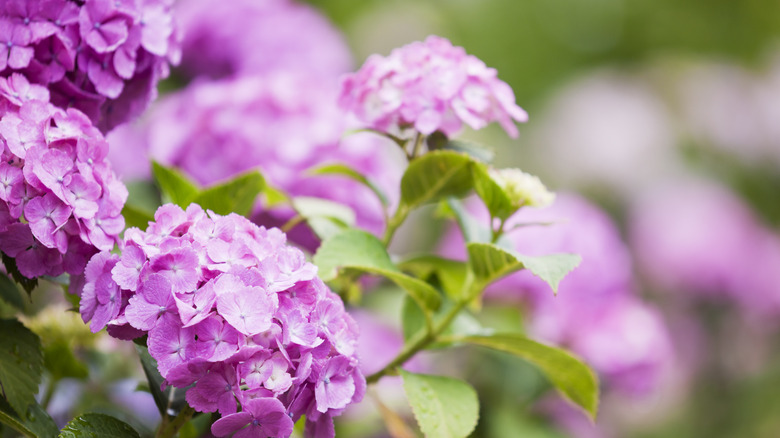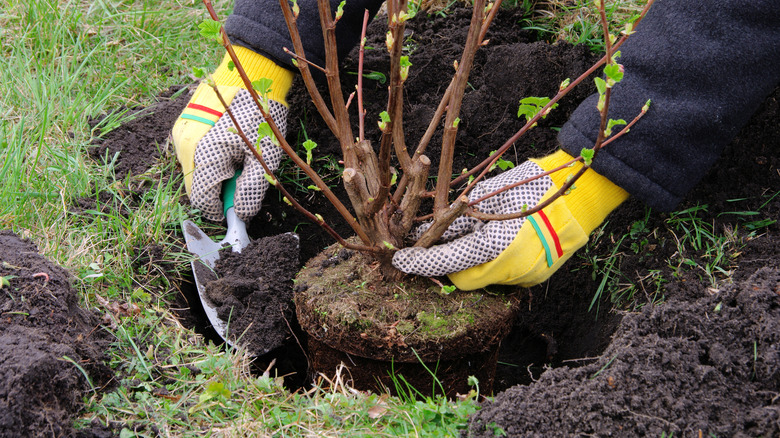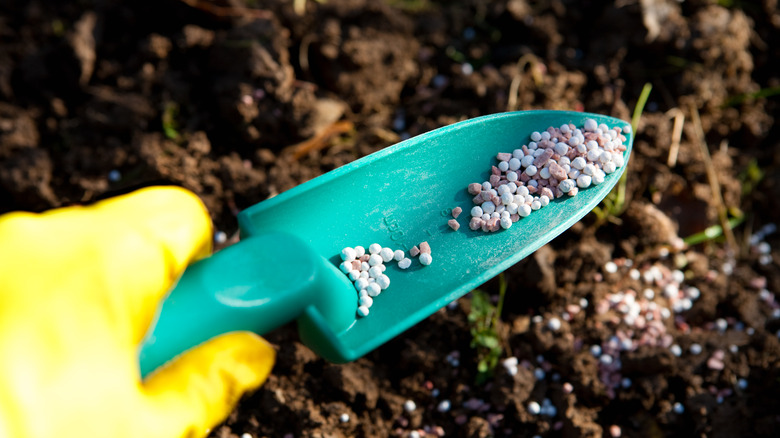The Gardening Tip You Shouldn't Overlook To Ensure Stunning Hydrangea Blooms
Hydrangeas have been the queen of the garden for generations because of their beautiful, ball or panicle-shaped blooms. They are a fast-growing shrub that is easy to maintain and makes a statement in any garden, modern or traditional. Many gardeners love growing hydrangeas because they can provide gorgeous cut flowers from mid-summer into fall. But if your hydrangea isn't blooming as you would like, or isn't blooming at all, it may be as simple as overcrowding.
As you might guess, "overcrowding" refers to when your plants grow too close together. It may have looked like the perfect spacing when they were young and small, but once they mature, that may change. Hydrangeas are relatively large shrubs growing between 4 and 12 feet tall and wide, so they need room. We need to give the plant everything it needs to be happy, including space. In return, it will give you armloads of pink, blue, or white blooms to fill both your garden and the vase.
How to fix overcrowding
Overcrowding is a mistake anyone can make when planting hydrangeas. It happens when we aren't careful about the spacing a plant will need once it reaches its full size. Overcrowding causes the plants to compete for water and nutrients with the plant next door. That alone can stop it from blooming.
If your plants are overcrowded, you need to transplant them farther apart. You will want to do this while the plant is dormant in either late fall after the plant loses its leaves or in early spring. If you don't know your hydrangea variety, estimate how wide your mature plant will be if it has the freedom to roam. Now make sure to plant it at least that far away from the plant or shrub next to it.
Not only can overcrowding cause your hydrangea to stop blooming, but it can also encourage fungal diseases. If plants are too close together, air cannot circulate. This keeps the leaves and blossoms wet all the time, which is the perfect growing environment for powdery mildew and leaf spot. These very diseases can also cause your plant to produce fewer blooms that don't last long on the shrub. Preventing powdery mildew is easier than trying to return your plants to good health.
Basic care for hydrangeas
Most hydrangeas are deciduous plants, which means they lose their leaves in the winter. But since they are fast-growing, they bounce right back in mid-spring. They love full sun but might require a little afternoon shade in areas with hot summers. They are flowers that will grow in partial shade as long as they receive at least six hours of sun per day. If they don't get enough sun, the plant will not have enough energy to produce blooms.
Hydrangeas prefer rich soil amended with compost and do best with an all-purpose fertilizer applied once in the spring. They like moist soil, so don't let them dry out on warm August days. They also prefer some humidity and are not a great choice to grow in desert areas. Provide several inches of mulch in the colder months to help protect their root systems. When to prune your hydrangeas depends on what variety you have. Check with your local nursery to determine if you should prune your variety in the fall or spring.


